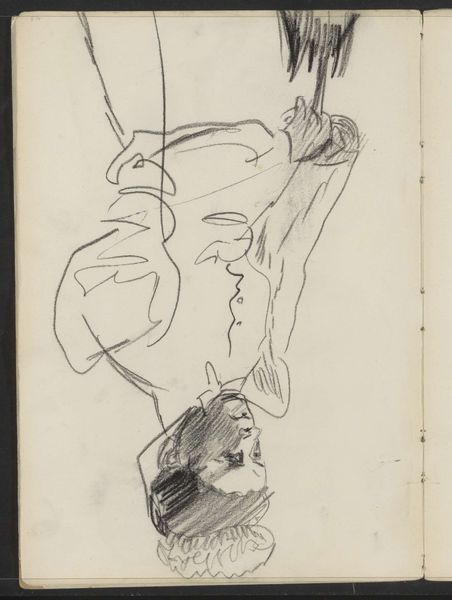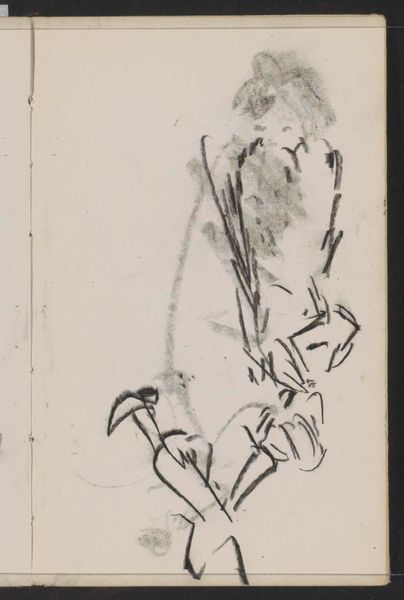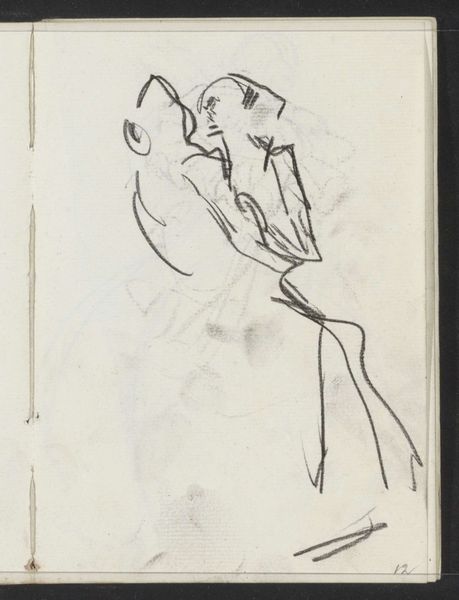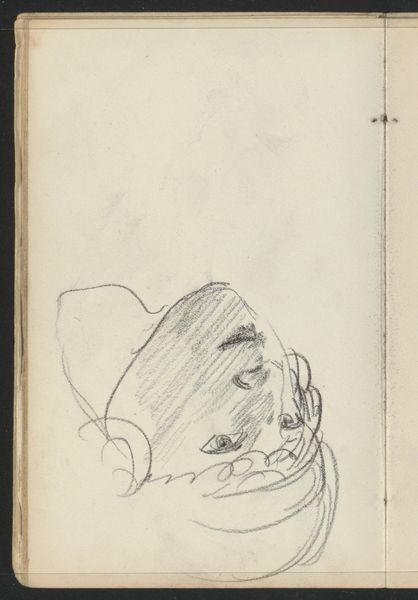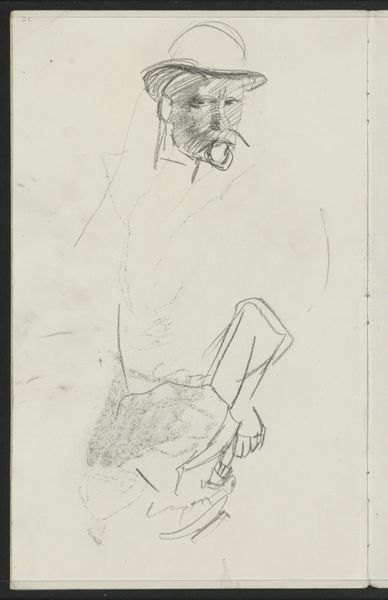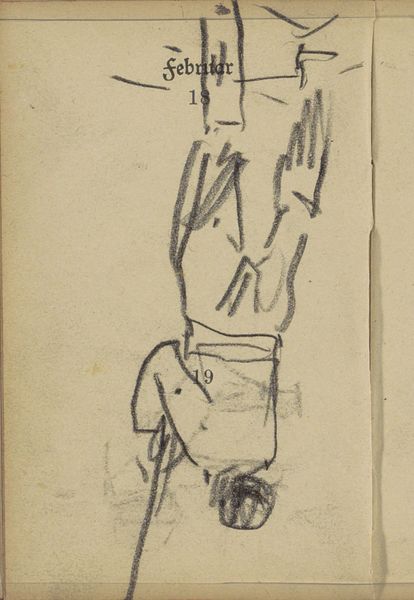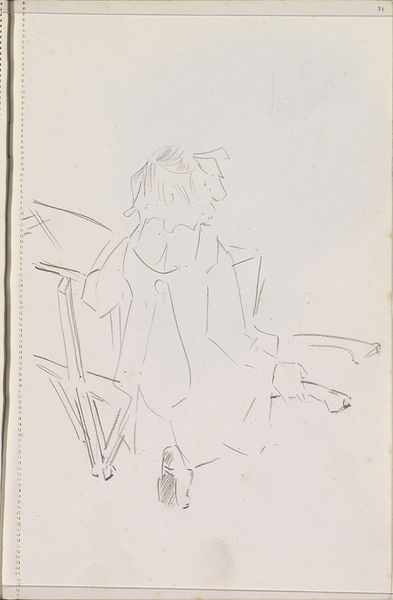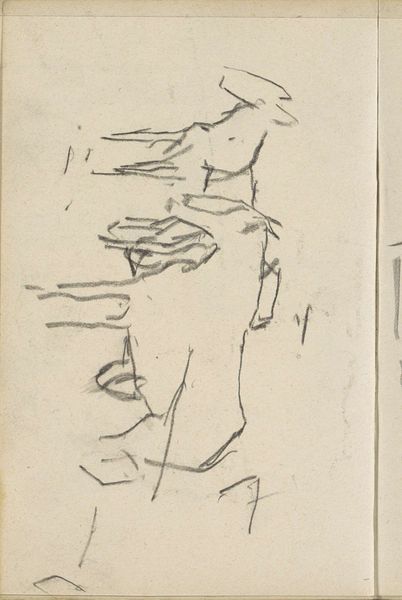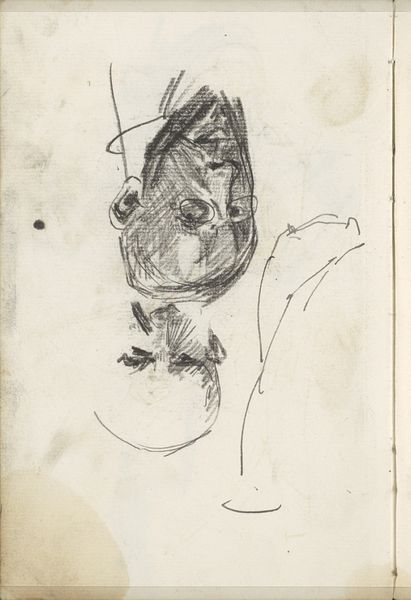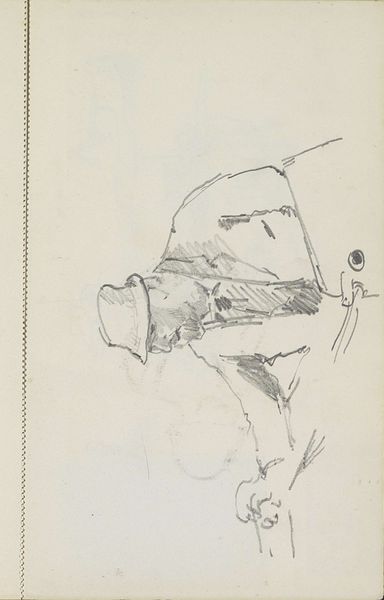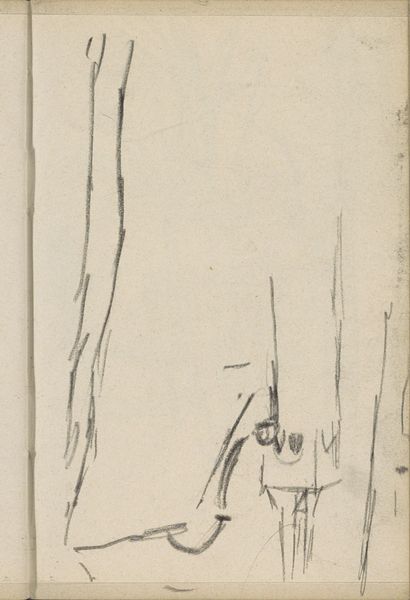
drawing, ink
#
drawing
#
ink drawing
#
figuration
#
ink
#
line
#
sketchbook drawing
#
realism
Copyright: Rijks Museum: Open Domain
Curator: Here we have Isaac Israels’ “Ruiter, op de rug gezien,” a sketch created with ink on paper, sometime between 1887 and 1934. The title translates to “Rider, seen from the back.” Editor: It feels so immediate, doesn't it? The sketchy lines suggest a fleeting moment captured on paper. It's incredibly simple in its composition, almost minimalist. Curator: Yes, Israels was known for this direct, observational style. He captured the dynamism of modern life. This particular drawing seems to invite us to contemplate the rider’s journey, perhaps mirroring our own. In Western art, the rider is often a hero figure—triumphant or adventurous—but here, with just a few lines, Israels subtly subverts this expectation. Editor: Subverts is a strong word. It does invite a lot of speculation—the choice of perspective conceals the rider's intentions and destination, turning him into a universal everyman rather than any specific hero archetype. Curator: Perhaps that universality makes it easier for the viewer to project their own narrative. Consider the horse itself, or what we can glimpse of it. A horse carries considerable weight, quite literally. Historically, it's linked to nobility and conquest, but what does it represent in our modern age? In our cultural memory? Editor: More formally, the line work creates a palpable sense of movement, especially in the suggested contours of the rider’s back and the drape of their coat. This creates a play of light and shadow. And those lines make for implied volume. The interplay creates a fascinating ambiguity between form and formlessness. Curator: That interplay resonates. Israels reduces the scene to its essence, prompting us to fill in the missing pieces, connecting not only to art history, but to personal experience and cultural expectations. It’s a subtle rebellion against tradition, or perhaps a knowing nod towards a changing world. Editor: Knowing nod indeed. Well, it certainly offered more food for thought than one might initially assume. A fine study in lines and suggestion.
Comments
No comments
Be the first to comment and join the conversation on the ultimate creative platform.
